2019 Bridges Conference Fashion Show
Daniela Cilurzo
Designers
Biography
Born in Catanzaro, Daniela Cilurzo grew up in Brianza and later moved to the Oltrepò Pavese. Here she intensely cultivates her love for nature and animals. This new dimension allowed her to live in close contact with them and to get to meet Kalè, the donkey for which she became a farrier. Indomitably curious and always interested in the most varied artistic techniques, she begins collaborating with different artists and artisans, from design to production. In this way she learned and experimented, venturing with oil paintings, chalks, watercolors but also with wall decorations for interiors, artistic stained glass and inlays. She discovers origami at the age of sixteen. In the beginning, it was pure fun, abandoned and resumed several times. It later becomes an art to study and to develop. The experiments with origami, particularly with geometric tessellations, reveal a new field of research: dressmaking. She, therefore, begins to apply the same rules of origami to fabrics, trying to turn the wonderful geometric stiffness, that is typical of this technique, into something soft and wearable. To reach her goal, in 2017, she becomes a seamstress and she starts designing and sewing her first line of origami dresses. She is part of the organizing committee of the convention "Origami e Didattica" promoted annually by Centro Diffusione Origami.
Looks
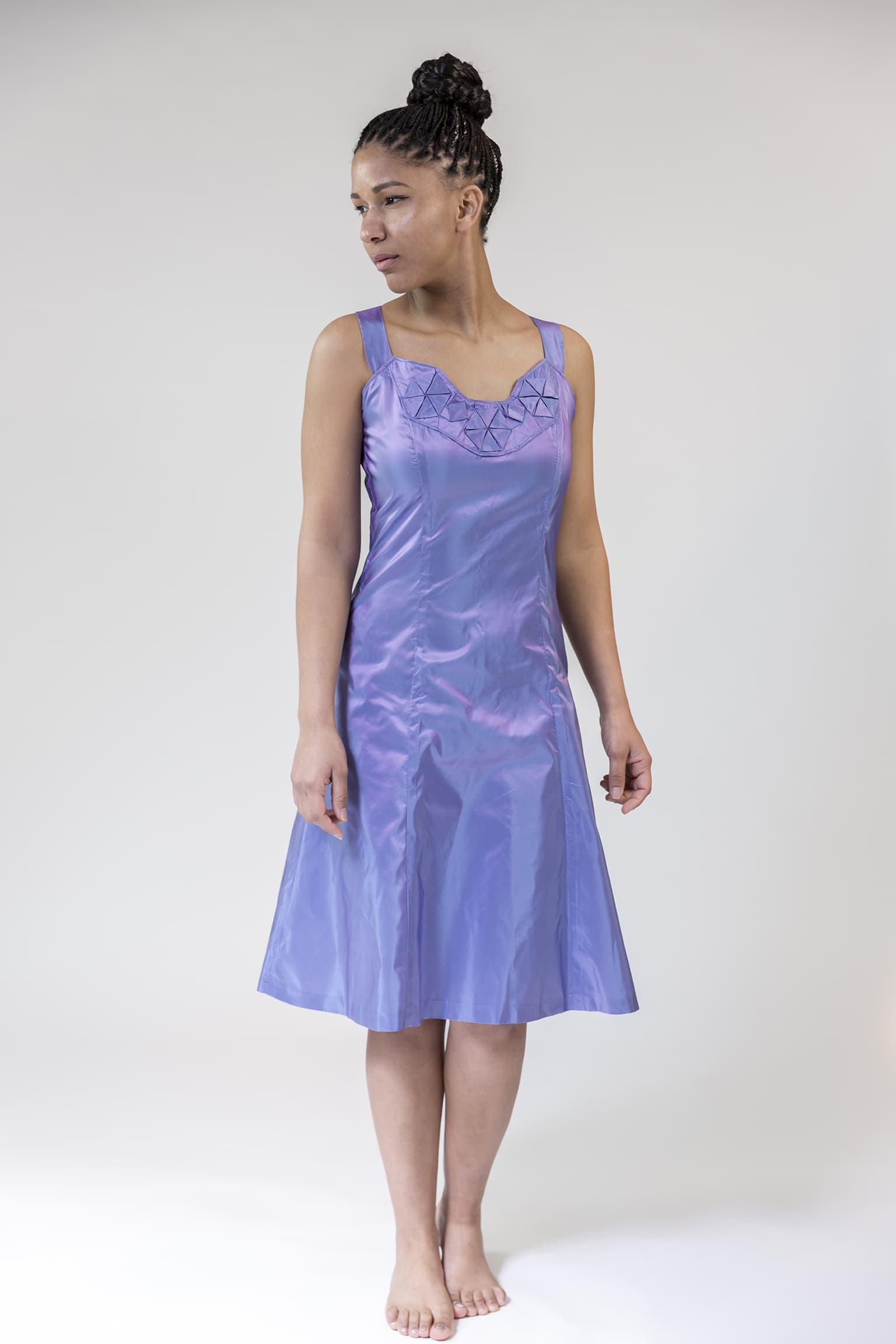
Photo: Mattia Calvo for MACA Foto, Pavia

Photo: Mattia Calvo for MACA Foto, Pavia
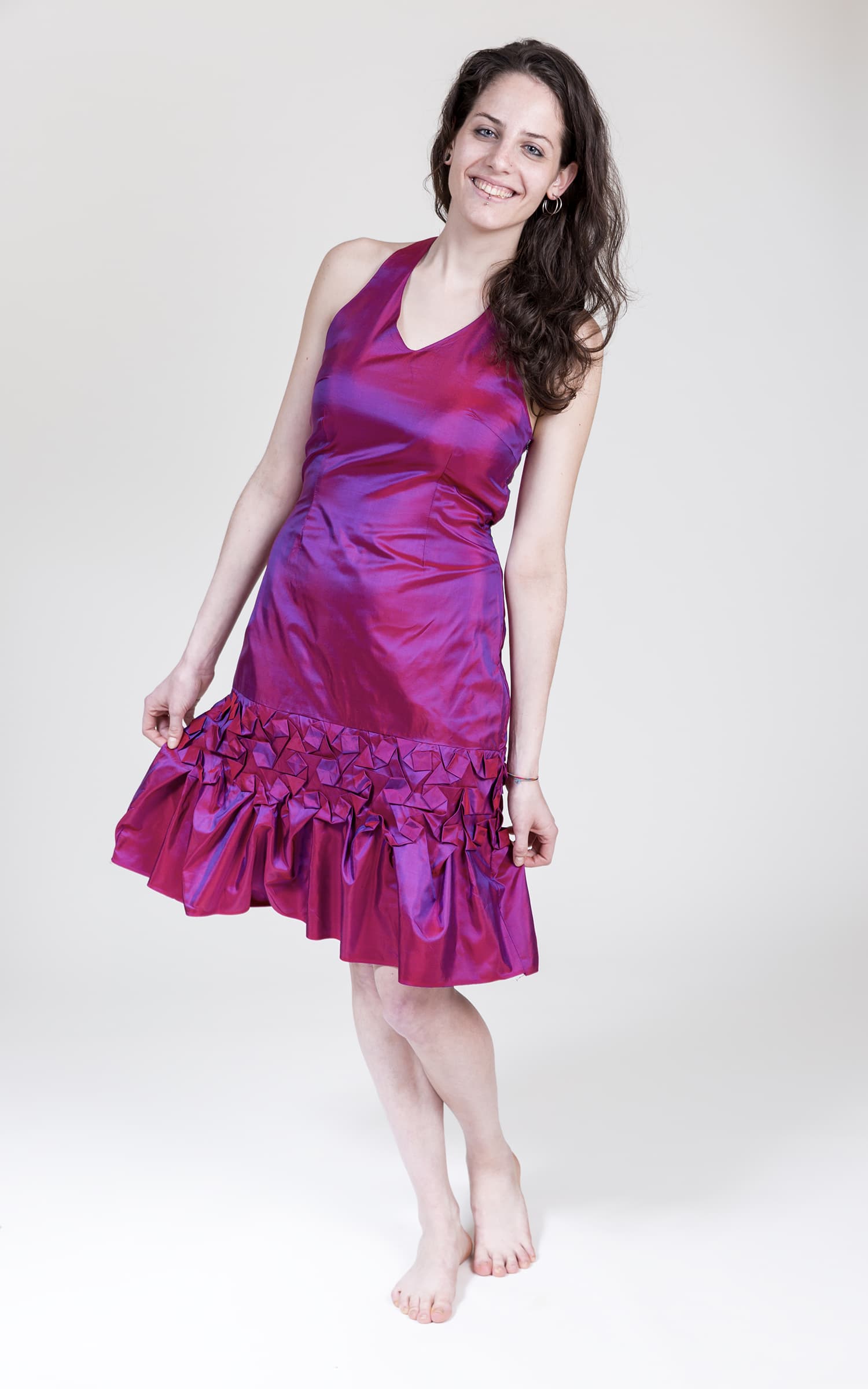
Photo: Mattia Calvo for MACA Foto, Pavia
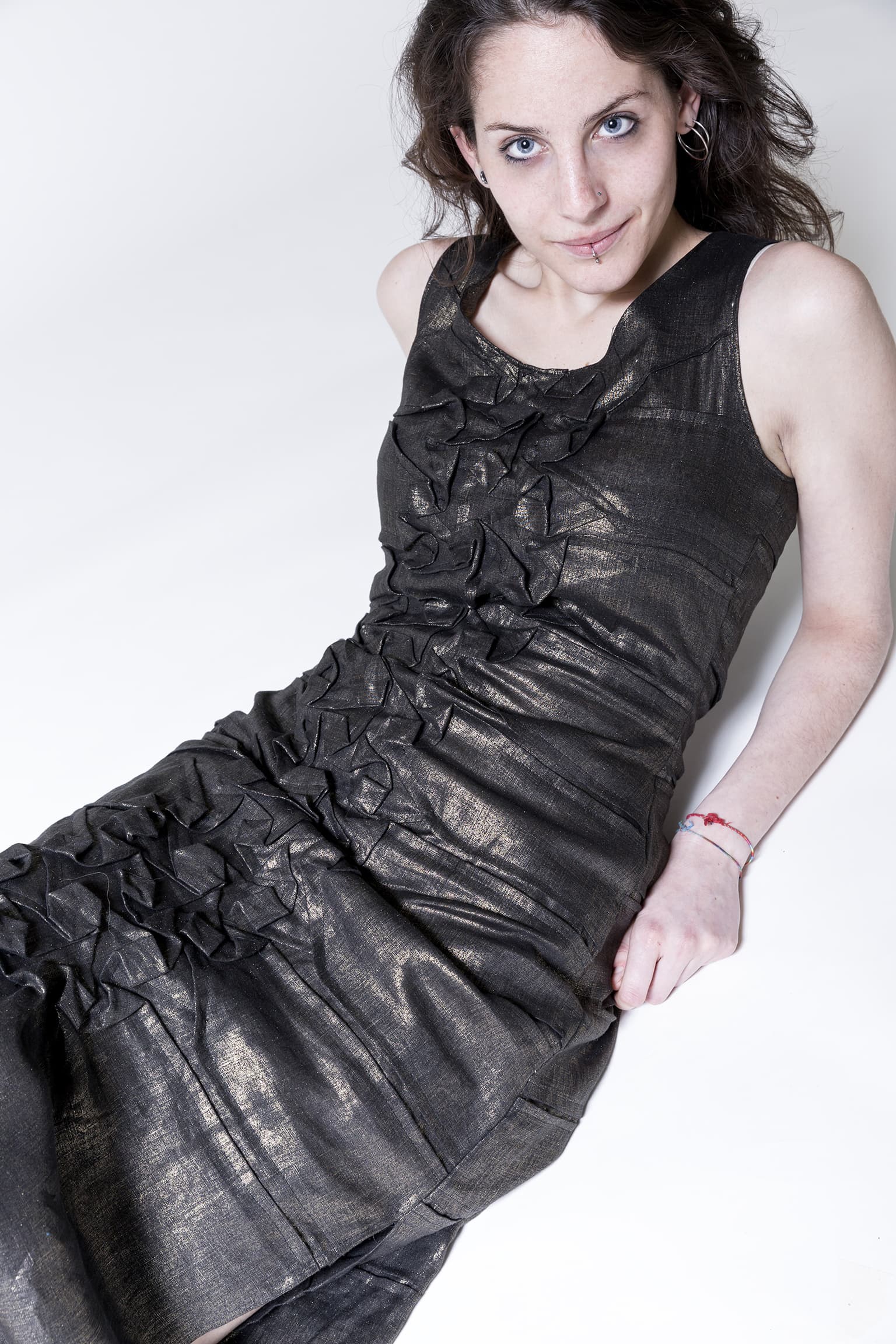
Photo: Mattia Calvo for MACA Foto, Pavia
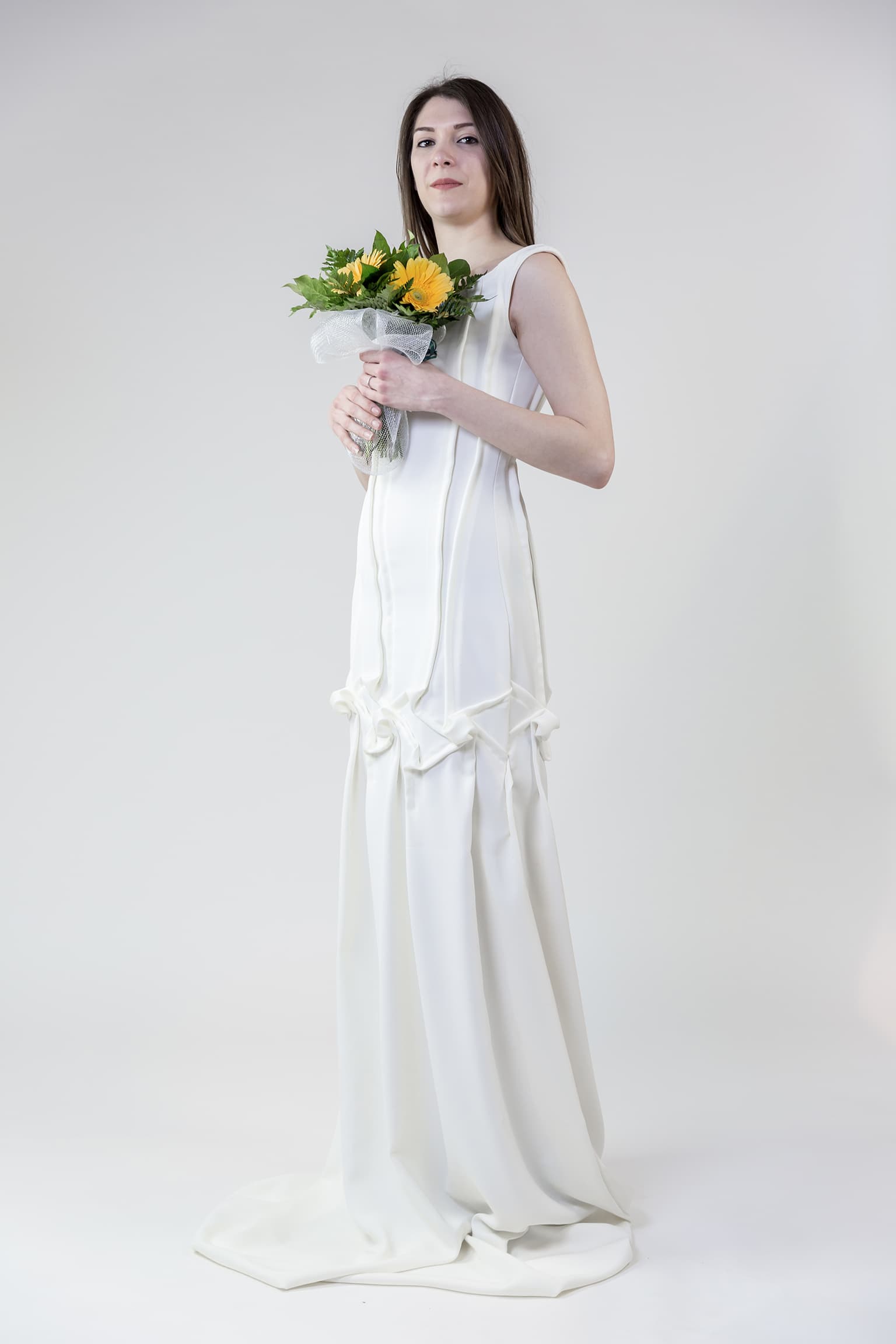
Photo: Mattia Calvo for MACA Foto, Pavia
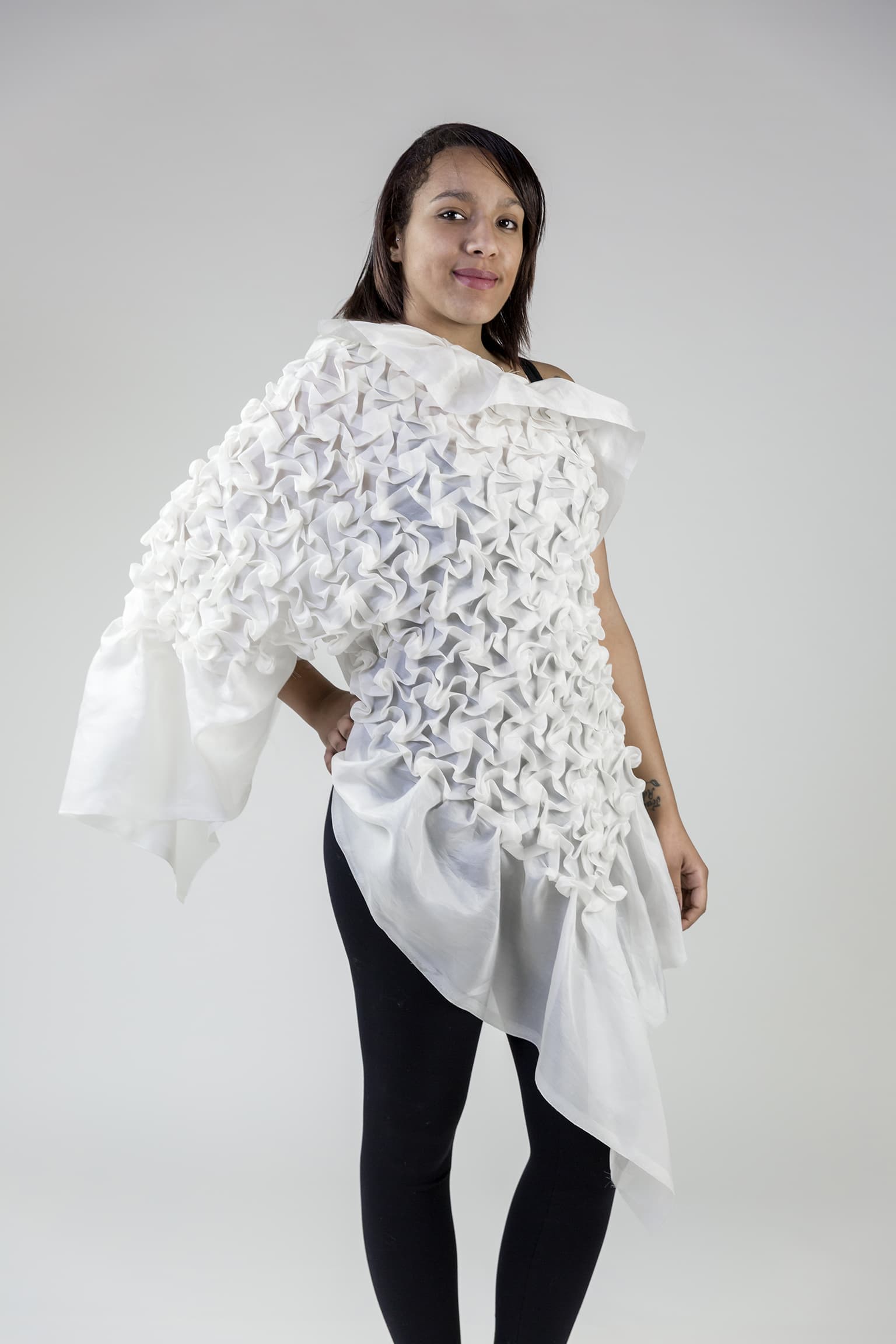
Photo: Mattia Calvo for MACA Foto, Pavia
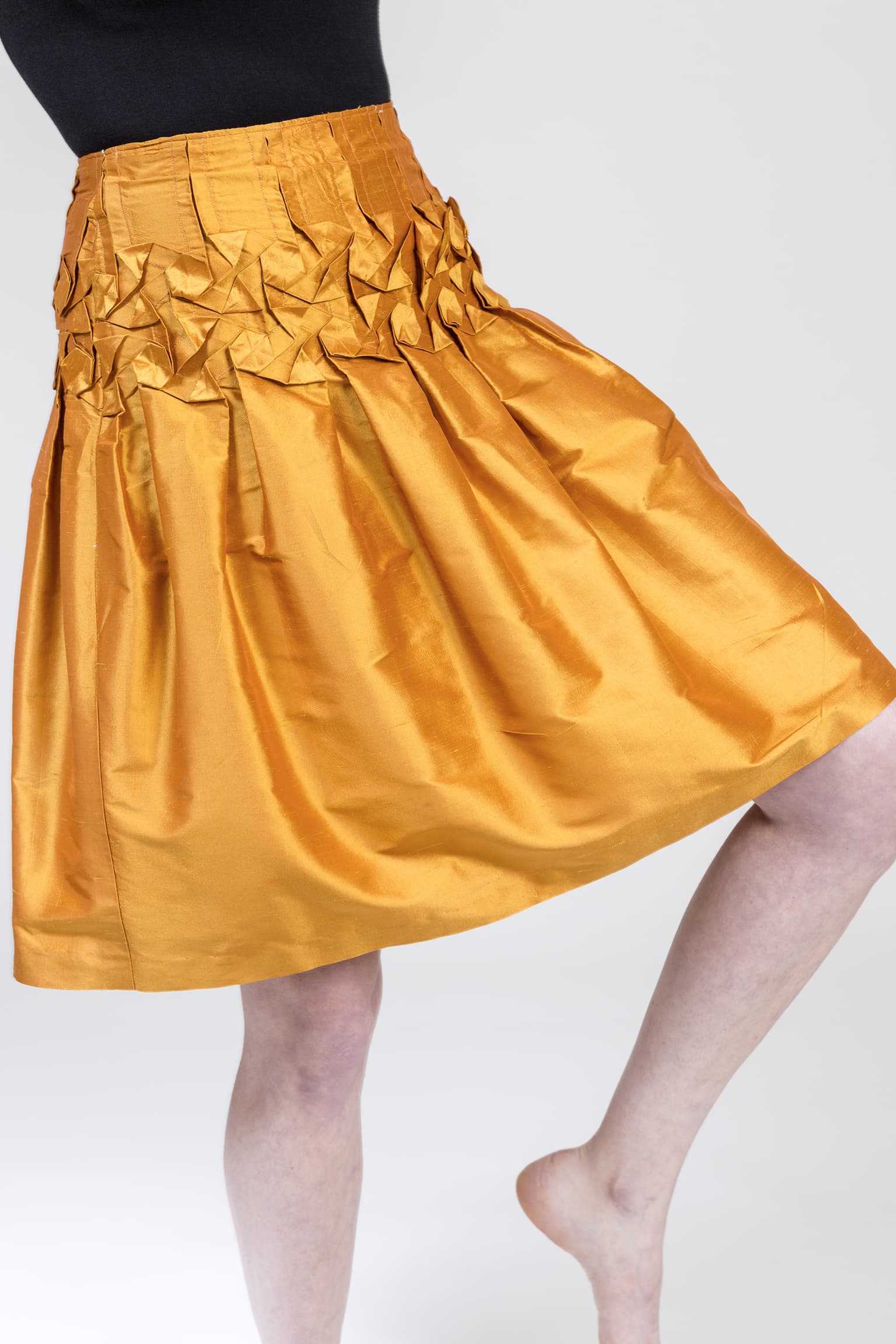
Photo: Mattia Calvo for MACA Foto, Pavia
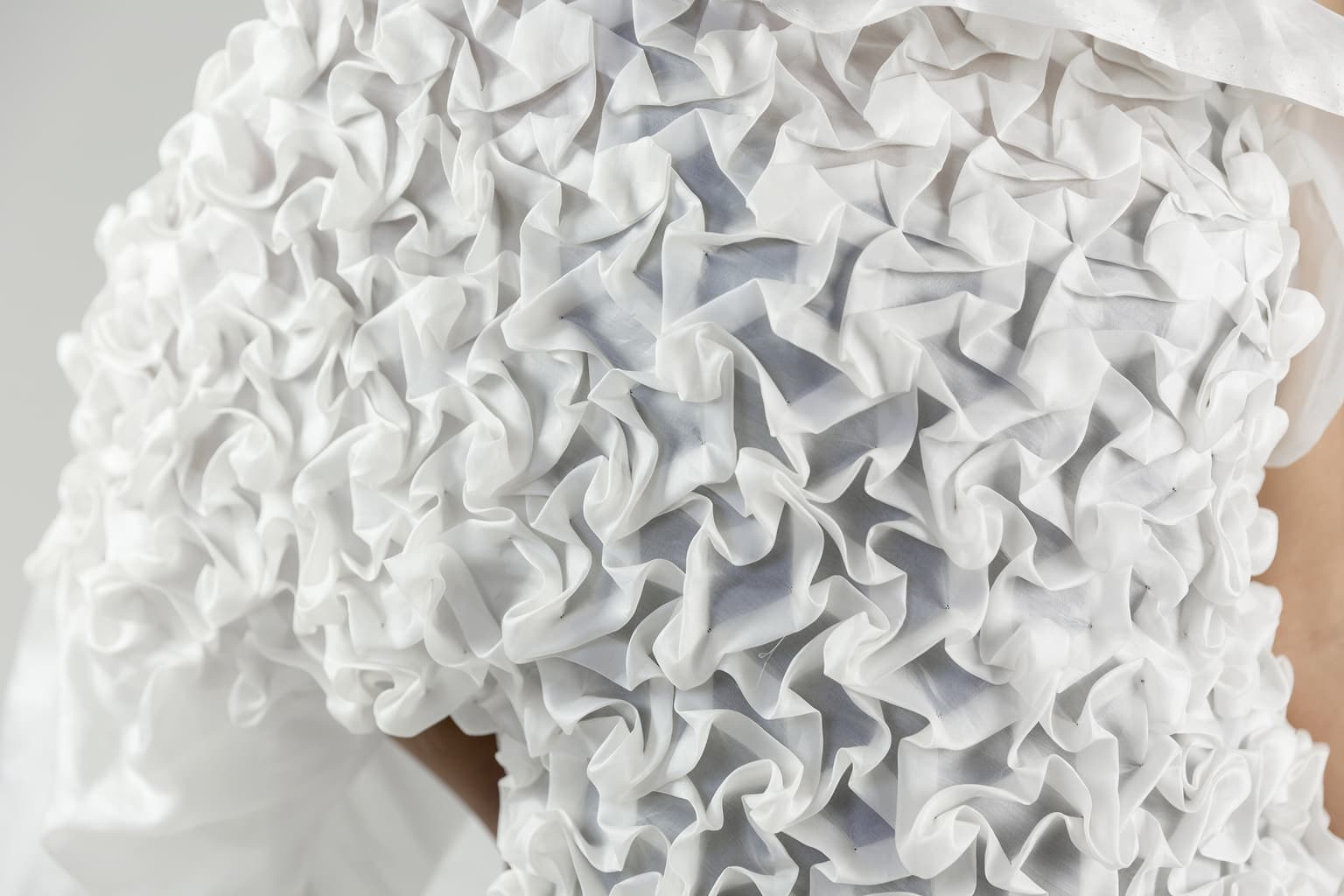
Photo: Mattia Calvo for MACA Foto, Pavia

Photo: Mattia Calvo for MACA Foto, Pavia

Photo: Mattia Calvo for MACA Foto, Pavia
About the look
Blue skirt
Taffeta fabric
2016
Lilac gown
Taffeta fabric
2016
Fuchsia gown
Taffeta fabric
2016
Black and golden dress
Cotton and linen
2016
White shawl
Voile fabric
2016
Ocher yellow skirt
Taffeta fabric
2015
Wedding dress
Synthetic fabric
2017
Green top
Taffeta fabric
2016